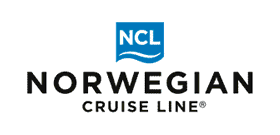 African itinerary aboard Norwegian Dawn reveals need for cruise infrastructure
African itinerary aboard Norwegian Dawn reveals need for cruise infrastructure
One cruise passenger’s experience of the South African and Indian Ocean itinerary with Norwegian Cruise Line aboard Norwegian Dawn highlights the need for greater investment in cruise infrastructure on the continent.
Allie Hubers sailed aboard Norwegian Dawn from Mauritius to Cape Town in January, one of nearly 30 cruises she’s been on all over the world, and blogged about her trip for Cruise.blog. “While the cruise was unforgettable…sailing to an uncommon area of the world had its challenges – some of which the cruise line did not seem prepared for,” she writes, adding that one of the great draws of the Mauritious to Cape Town itinerary was its novelty.
Africa offers a fantastic destination-focused experience, giving passengers the chance to interact with authentic local cultures, get up close with wild animals on game safaris and walk lesser-trodden paths on remote beaches, mountains and valleys.
But the lack of cruise infrastructure on-par with North America and Europe presents challenges that may put some passengers off, and should be urgently addressed if Africa wants to attract more cruise lines as the industry continues to grow.
Hubers writes that over the course of 12 nights, the ship visited bucket-list destinations in Mauritius, Madagascar, and South Africa, but the lack of infrastructure and proper customs and immigration processes for cruise lines presented a recurring frustration.
Port congestion necessitated changes to the itinerary
One of the first problems was that port congestion in Mozambique forced Norwegian Cruise Line to drop the country from the original itinerary, while the port calls in Madagascar and Reunion were reduced in time.
Hubers suggests the changes may have also been a cost-cutting measure, but was unable to confirm this. Norwegian Cruise Line also removed the overnight in Richard’s Bay, South Africa, without providing a reason.
Lack of port infrastructure complicated boarding
Hubers also found that inadequate cruise infrastructure at ports on the itinerary presented unnecessary challenges. The problems began before the cruise itself, with Norwegian Dawn forced to use a commercial berth rather than the main cruise terminal due to another ship already being in port.
“As we arrived at the port, we were met with a big tent and an even bigger line of passengers waiting in the hot sun,” writes Huber. “It looked like everyone on our cruise was waiting in this long line.”
With no terminal or building and only a large temporary tent, passengers were forced to wait in line under the tropical sun with their luggage. Many hadn’t been prepared for the long wait in the sun and so had not applied sunscreen or brought water with them.
According to Huber, many of the older guests suffered from heat stroke and exhaustion during the two-hour boarding process.
South Africa’s in-person immigration requirements created delays
While other dissapointments during the cruise, such as a missed ‘tender only’ port call at Madagascar due to bad weather were beyond the control of Norwegian Cruise Line or local authorities, other challenges appear self-inflicted on the part of the South African government, such as its beurocratic immigration procedures.
Most cruise ports around the world have established immigration proceedures that incorporate digital authentication to eliminate the need for in-person immigration, but in South Africa this is not yet the case, and Norwegian Dawn’s passengers were required to present themselves to authorities before going ashore in Richard’s Bay.
Due to disorganisation on the part of both Norwegian Cruise Line and South African officials, the immigration queues grew, along with passengers’ frustration as they waited hours in line.
“Unfortunately, it sounded like Norwegian Cruise Line was not enforcing any sort of line as guests approached the entrance for immigration,” writes Huber. “This created a bottleneck of passengers trying to get through immigration as quickly as possible. With many different cultures onboard, the concept of respecting a line didn’t seem to resonate universally,” she adds, and inevitably fights broke out between passengers, with punches and verbal insults thrown.
Congestion in Cape Town led to a chaotic disembarkation
Norwegian Dawn was unable to dock alongside at the terminal in Cape Town, because Cunard’s Queen Mary II was rerouted around Africa due to disruptions in the Suez Canal.
The ship was therefore forced to dock at the other end of the port amid commercial shipping, and guests had to rely on a shuttle to get to and from the port entrance and the V& A Waterfront. Being docked at the far end of the port also created problems during disembarkation with passengers bags left on a gravel road next to the ship, which made it difficult to carry luggage to the bus.
“While I don’t mind handling my own luggage, the gravel made it very difficult to maneuver,” writes Huber. “Even though we had an organized disembarkation tour through the cruise line, all guests had to pick up their luggage and bring it to the nearby coach bus.”
Huber’s account of her voyage is not a littany of criticism, she notes that she “had an amazing time sailing around Africa on Norwegian Dawn” and is full of praise for the well-organised shore excursions and the experiences she had ashore in all the ports.
However, the criticisms she does mention, highlight the need for better cruise infrastructure and cruise-friendly immigration proceedures to negate these frustrations for passengers and make the continent an even more appealing cruise destination.
